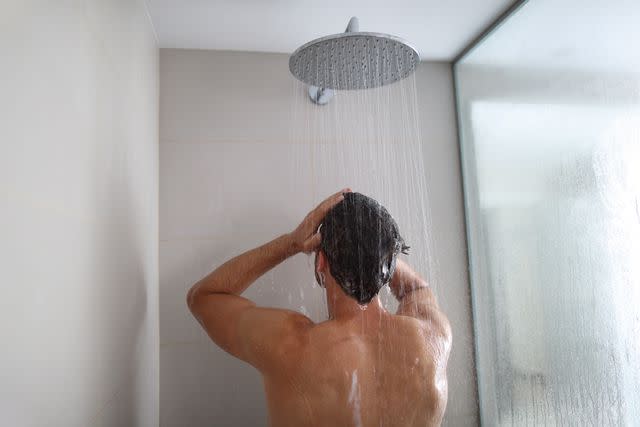Dandruff vs. Dry Scalp: Flake Identification and Removal
Medically reviewed by Susan Bard, MD
Dandruff and dry scalp are common conditions with similar symptoms but different causes and treatments. Dandruff and dry scalp can cause itching and flaky skin to come off the scalp. The causes for these two conditions differ, and as a result, they also have different treatments.
This article will cover dry scalp and dandruff symptoms, their causes, and treatment options. It will also discuss how to prevent these conditions from even occurring.

Maridav / Getty Images
Dandruff vs. Dry Scalp: How Symptoms Look
Dandruff and dry scalp can look very similar. However, there are a few unique differences to help determine the underlying condition.
A dry scalp can cause small, white skin flakes to come off of the scalp. The skin flakes can be found in the hair or the person's shoulders and clothes. With dry scalp, the scalp may also feel itchy, and dry skin might be found on other areas of the body.
Dandruff also causes skin flakes, but the flakes tend to be yellow in color and larger than dry scalp skin flakes. The scalp can be red, swollen, and itchy. Dandruff is caused by several underlying conditions that can occur over time.
How to Treat Dandruff vs. Dry Scalp
Dandruff and dry scalp can be treated at home but are treated differently. Before beginning treatment, contact your healthcare provider to make sure you have the correct diagnosis.
Home Remedies
Most research does not support home remedies for dry scalp and dandruff treatment.
A dry scalp is best treated with a gentle, unmedicated shampoo. Use a moisturizing conditioner after shampooing.
Dandruff will need to be treated with a medicated shampoo. These can be purchased over the counter (OTC; without a prescription) or can be prescribed by a healthcare provider.
Shampoos and Prescribed Options
Dandruff can be treated at home with an OTC medicated shampoo. The active ingredient in dandruff shampoos can vary, but these shampoos usually contain one of the following:
Zinc pyrithione
Selenium sulfide
Coal tar
Ketoconazole
Tar-based shampoos can make the scalp sensitive to sunlight and stain light-colored hair.
Follow the shampoo label to determine how and when to use the product. Generally, once the dandruff has improved, you can use it less often.
If there is no improvement after four to six weeks, try a different shampoo with a different active ingredient. Contact a healthcare provider if dandruff does not improve with OTC shampoo.
Dandruff Shampoos
With so many different dandruff shampoos on the market, it can be difficult to know which brand to trust. Here are several product options and their active ingredients:
Head & Shoulders: Zinc pyrithione
Selsun Blue: Selenium sulfide
T-Gel: Coal tar
Nizoral 1%: Ketoconazole
What Causes Dandruff vs. Dry Scalp?
One of the misconceptions about dandruff and dry scalp is that they are caused by poor hygiene. Neither dandruff nor dry scalp are caused by poor hygiene.
A dry scalp is caused when the skin on the scalp loses moisture. This can result from using hair products that remove the oil from the skin and strip it dry or from weather that is dry, cold, or low humidity.
Dandruff is typically caused by seborrheic dermatitis. This is a skin condition caused by a combination of yeast (Malassezia) found on the skin and too much sebum in the oil glands and hair follicles.
Seborrheic dermatitis can develop anywhere on the body that has oil glands. It's commonly seen on the scalp but can also occur on the face, armpits, groin, and buttocks. When babies have seborrheic dermatitis on the scalp it is called cradle cap.
Dandruff Associated Conditions
While seborrheic dermatitis is the primary cause of scalp flaking, there are other causes. They include:
How to Prevent Flaking From Dandruff vs. Dry Scalp
To prevent flaking from a dry scalp, it's important to keep the skin moisturized. Use a gentle shampoo and conditioner and add moisture to the hair and skin.
Dandruff cannot always be prevented, but you may be able to reduce its frequency if you can avoid its triggers. Some triggers for dandruff are:
Cold weather
Sweat
Strong detergents and chemicals
Hot shower water
If a dandruff flare-up starts, treating it promptly with medicated shampoo can help reduce the symptoms and duration.
Summary
Dandruff and dry scalp are two skin conditions seen on the scalp. Dandruff is caused by an underlying condition, seborrheic dermatitis, which causes large, yellow-colored skin flakes. A dry scalp causes white colored skin flakes and it is caused by a lack of moisture on the skin. Both conditions can cause uncomfortable itching.
OTC treatments are generally effective. But if the condition does not resolve, contact a healthcare provider for further guidance.
Read the original article on Verywell Health.

